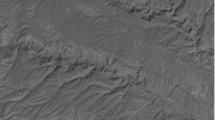Abstract
A new information-theoretic approach is presented for finding the pose of an object in an image. The technique does not require information about the surface properties of the object, besides its shape, and is robust with respect to variations of illumination. In our derivation few assumptions are made about the nature of the imaging process. As a result the algorithms are quite general and may foreseeably be used in a wide variety of imaging situations.
Experiments are presented that demonstrate the approach registering magnetic resonance (MR) images, aligning a complex 3D object model to real scenes including clutter and occlusion, tracking a human head in a video sequence and aligning a view-based 2D object model to real images.
The method is based on a formulation of the mutual information between the model and the image. As applied here the technique is intensity-based, rather than feature-based. It works well in domains where edge or gradient-magnitude based methods have difficulty, yet it is more robust than traditional correlation. Additionally, it has an efficient implementation that is based on stochastic approximation.
Similar content being viewed by others
References
Becker, S. and Hinton, G. E. 1992. Learning to make coherent predictions in domains with discontinuities. In Advances in Neural Information Processing, J. E. Moody, S. J. Hanson, and R. P. Lippmann, (Eds.), Denver 1991. Morgan Kaufmann: San Mateo, vol. 4.
Bell, A. J. and Sejnowski, T. J. 1995. An information-maximisation approach to blind separation. In Advances in Neural Information Processing, Denver 1994. Morgan Kaufmann: San Francisco, vol. 4.
Besl, P. and Jain, R. 1985. Three-dimensional object recognition. Computing Surveys, 17:75-145.
Bridle, J. S. 1989. Training stochastic model recognition algorithms as networks can lead to maximum mutual information estimation of parameters. In Advances in Neural Information Processing 2, D. S. Touretzky (Ed.), Morgan Kaufman, pp. 211-217.
Chin, R. and Dyer, C. 1986. Model-based recognition in robot vision. Computing Surveys, 18:67-108.
Collignon, A., Vandermuelen, D., Suetens, P., and Marchal, G. 1995. 3D multi-modality medical image registration using feature space clustering. In Computer Vision, Virtual Reality and Robotics in Medicine, N. Ayache (Ed.), Springer Verlag, pp. 195-204.
Cover, T. M. and Thomas, J. A. 1991. Elements of Information Theory. John Wiley and Sons.
Duda, R. and Hart, P. 1973. Pattern Classification and Scene Analysis. John Wiley and Sons.
Haykin, S. 1994. Neural Networks: A comprehensive foundation. Macmillan College Publishing.
Hill, D. L., Studholme, C., and Hawkes, D. J. 1994. Voxel similarity measures for automated image registration. In Proceedings of the Third Conference on Visualization in Biomedical Computing, pp. 205-216, SPIE.
Horn, B. 1986. Robot Vision. McGraw-Hill: New York.
Huttenlocher, D., Kedem, K., Sharir, K., and Sharir, M. 1991. The upper envelope of Voronoi surfaces and its applications. In Proceedings of the Seventh ACM Symposium on Computational Geometry, pp. 194-293.
Linsker, R. 1986. From basic network principles to neural architecture. Proceedings of the National Academy of Sciences, USA, vol. 83, pp. 7508-7512, 8390-8394, 8779-8783.
Ljung, L. and Süderstrüm, T. 1983. Theory and Practice of Recursive Identification. MIT Press.
Lowe, D. 1985. Perceptual Organization and Visual Recognition. Kluwer Academic Publishers.
Shashua, A. 1992. Geometry and Photometry in 3D Visual Recognition. Ph. D. thesis, M. I. T Artificial Intelligence Laboratory, AITR-1401.
Turk, M. and Pentland, A. 1991. Face recognition using eigenfaces. In Proceedings of the Computer Society Conference on Computer Vision and Pattern Recognition, Lahaina, Maui, Hawaii, pp. 586- 591. IEEE.
Viola, P. A. 1995. Alignment by Maximization of Mutual Information. Ph. D. thesis, Massachusetts Institute of Technology.
Wells III, W. 1992. Statistical Object Recognition. Ph. D. thesis, MIT Department Electrical Engineering and Computer Science, Cambridge, Mass. MIT AI Laboratory TR 1398.
Widrow, B. and Hoff, M. 1960. Adaptive switching circuits. In 1960 IRE WESCON Convention Record, IRE, New York, 4:96-104.
Author information
Authors and Affiliations
Rights and permissions
About this article
Cite this article
Viola, P., Wells III, W.M. Alignment by Maximization of Mutual Information. International Journal of Computer Vision 24, 137–154 (1997). https://doi.org/10.1023/A:1007958904918
Issue Date:
DOI: https://doi.org/10.1023/A:1007958904918




